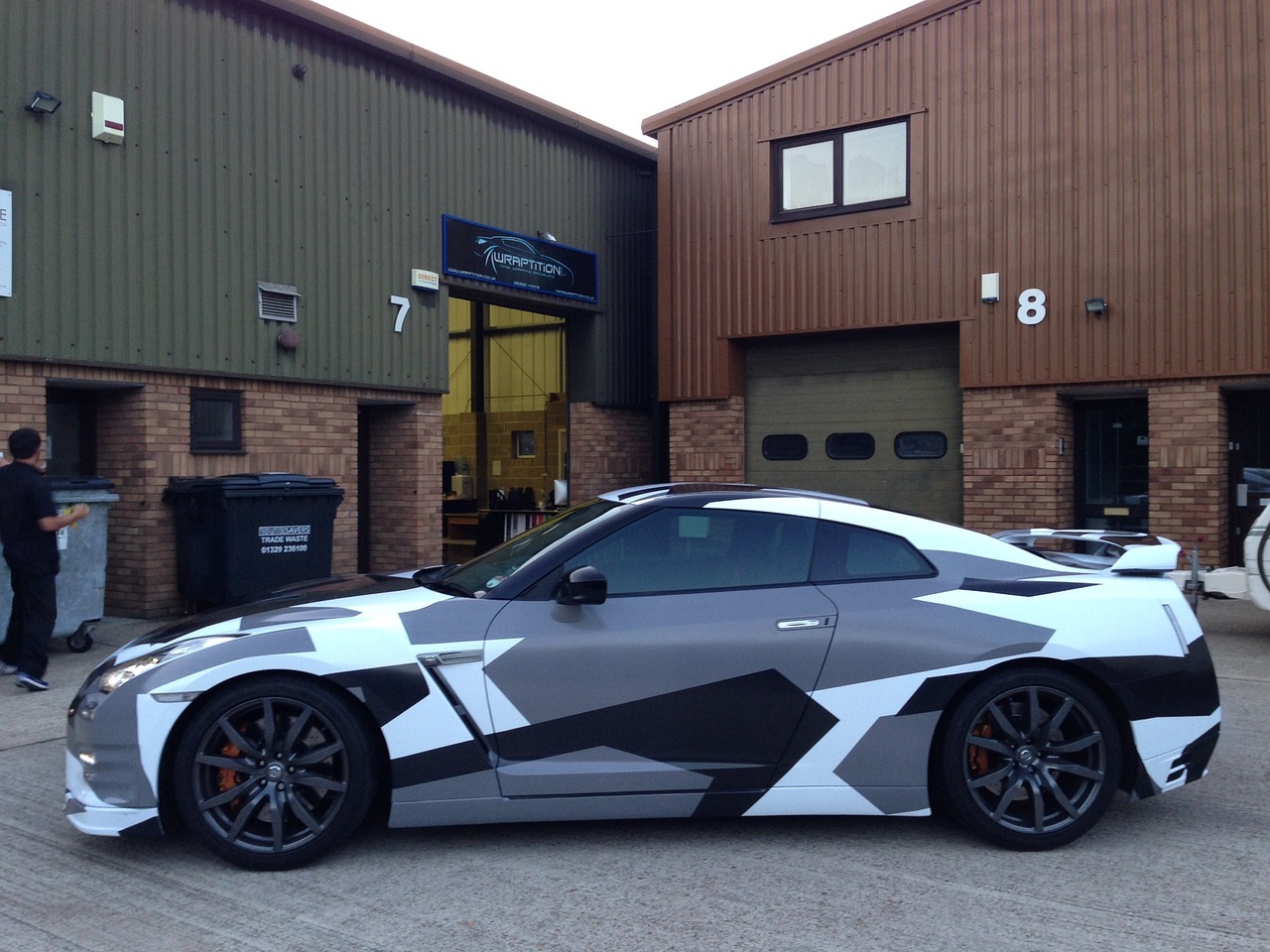Car wrapping at home. Buy cast vinyl for more flexibility in your packaging. The two main types of vinyl are calendered and cast. Calendered vinyl is thicker but stickier, while cast vinyl is more flexible and easier to maneuver around curves and edges. Choose vinyl with built-in air release channels for a hassle-free installation. Use vinyl wrap on smooth substrates like glass, corrugated plastic, and painted aluminum. Avoid using vinyl on wooden surfaces. Buy about 15 to 20 feet (4.6 to 6.1 m) more vinyl than you think you’ll need in case you mess up one of the panels. Avoid using chrome if this is your first time applying vinyl wrap. Chrome is the most expensive and difficult to apply, especially for beginners. Glossy, printed covers have a longer shelf life and offer better protection than matte vinyl.
Car wrapping at home – Sweep and clean the area where you want to install the wrap
Vinyl wraps attract dust, so clean the area thoroughly before inserting the vinyl wrap. Sweep, clean and dust the area to prevent dirt particles from adhering. Make sure you have enough room to comfortably extend the vinyl wrap to the proper length. Use a cleaning solution and a lint-free cloth to clean the surface you are wrapping. Spray a cleaning solution directly onto the surface you are wrapping and use a lint-free cloth to buff the surface. Move the cloth in counterclockwise circles until the surface is completely dry. Dirt and moisture will prevent the adhesive from adhering properly. Rapid Tac is a great solution for cleaning surfaces prior to wrapping. Try not to place the vinyl wrap on the floor as it will attract dirt particles. These dirt particles will leave streaks once you start applying it. If you’re packing up a truck or car, take it to a car wash 24 hours in advance so it can dry overnight. Do not use waxes or protectants as they can interfere with the adhesive.
Measure the length of the area you are wrapping
Tape a piece of painter’s tape to the edge of the surface to be wrapped, with at least 3 inches (7.6 cm) hanging over the edge. Leave the tape on the roll and unroll it to the other side of the surface. Tear the tape off the roll with at least 1.2 inches (3 centimeters) hanging on both sides. Keep the tape flat against the surface so it conforms to edges, contours and gaps. If your surface is not flat (like on a car or truck), the tape will allow you to measure the proper amount of vinyl needed to cover the contours. If you are packing a car, truck, or anything that has multiple split panels, you will need to measure and pack each panel separately.
Use painter’s tape to measure the width of the surface. Repeat the same process as before, but this time measure the width. Use a roll of painter’s tape and place it roughly in the center of the long edge of the surface. Leaving at least 2 to 3 inches (5.1 to 7.6 cm) hanging on each side, wrap the tape directly over the tape lengthwise and adhere it. The two lines of tape will intersect approximately in the middle.
Car wrapping at home – Unroll vinyl while keeping it off the ground
Peel off the top of the tape that you stuck to the surface and line up one end of the tape with the end of the unrolled vinyl. Stretch the tape over the back of the vinyl and mark the edge where it reaches. Use an X-Acto knife to cut straight across the vinyl here.n Keep the cut as straight as possible. Most vinyl wraps have lines built in for reference. Ask a friend to help you if possible. Have them pull on the end of the vinyl as you hold the roll, then place the end of the tape over the end of the vinyl they’re holding. This will allow you to unroll the vinyl without putting it on the floor, which could damage the vinyl.
Pros
Build your brand with a car wrap. One of the main aspects of branding a company is name recognition. The repetitive action of seeing your company logo in traffic makes your business a priority for consumers.
Moving Billboard . Unlike a traditional billboard, a car with a vehicle wrap can be moved to multiple locations. This allows you to target multiple audiences at different times of the day. Learn more about vehicle wrap advertising versus traditional marketing.
Vehicle wraps work day and night – Vehicle wraps are a 24/7 advertising opportunity for your business. Your logo will be visible when driving in traffic during the day and also at night when the car is parked overnight at your business.
Car wrapping at home – Benefits of vehicle wraps
Vehicle wraps protect paint .A car’s paint can often be scratched by road debris or can fade over time. Vehicle wraps add a layer of protection to the bodywork and also help preserve the car’s retail value.
Easy to Replace . There are times when a wrap can get scratched, damaged or torn. If this happens, you can simply replace the damaged panel, as opposed to damaged paint, which often requires repainting the entire car.
Add a level of professionalism. Enhance your professional status in the eyes of customers with a vehicle wrap. When consumers see your brand vehicle, they feel that you are serious about providing quality service to the community.
